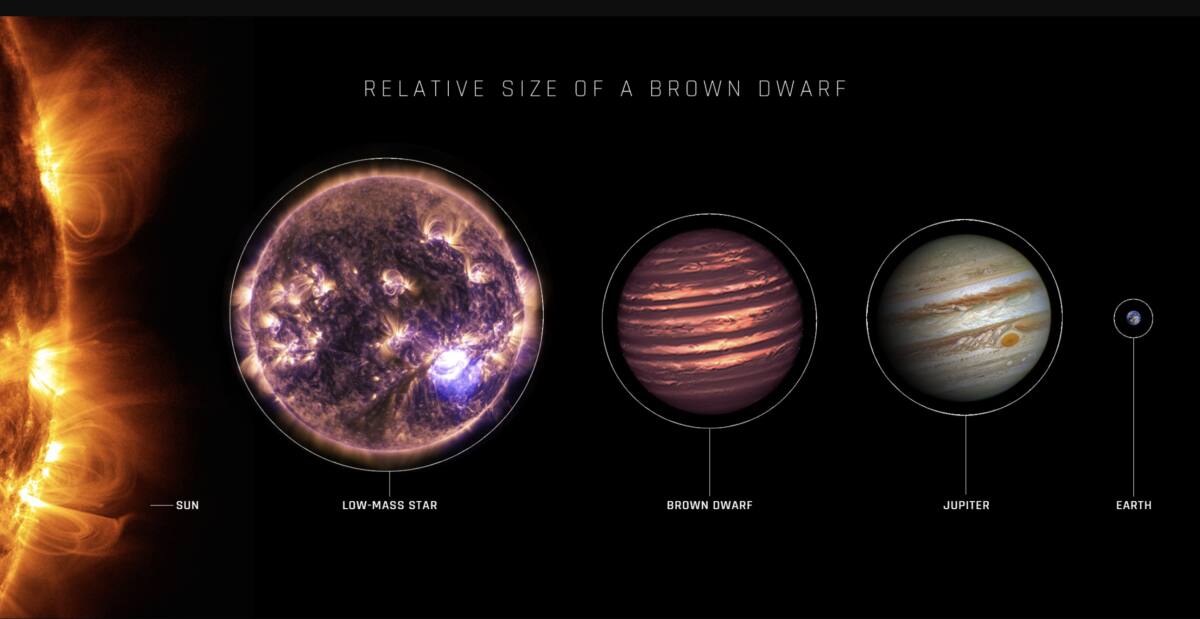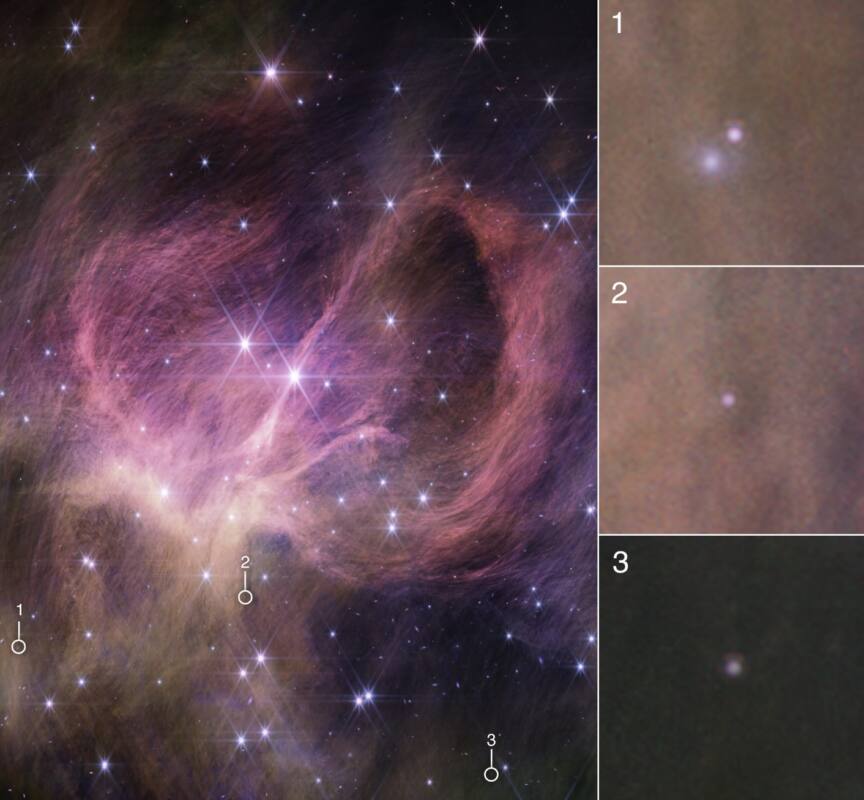The James Webb Space Telescope, which NASA calls the most powerful telescope ever built, has been astounding scientists and space enthusiasts since international agencies, including the European Space Agency and the Canadian Space Agency, launched it on Christmas Day 2021. It’s on a mission to solve solar system mysteries, looking into distant worlds and exploring the origins of the universe.
And this week, scientists using the Webb telescope accomplished something new. They have been trying to determine the smallest object that forms in a star-like way, and using the Webb telescope, they’ve identified a new prospect: a free-floating brown dwarf.
Brown dwarfs are considered to be the dividing line between stars and planets because they form like stars when a small, dense cloud of gas collapses due to gravity. But, the gravity of small clouds is weaker. So, when these bodies start accumulating material, they aren’t able to collect enough to start the hydrogen fusion that turns them into a star.

MORE: See the Webb telescope’s stunning new look at a distant neighbor
Brown dwarfs do emit some infrared light and heat due to the fusion of deuterium, but they cool down over time. Since they were detected in 1995, astronomers have believed that the lower limit of their mass was around 12 or 13 Jupiter masses. Now, the Webb telescope’s infrared sensitivity has allowed it to find three small dwarf stars that are just 3-8 Jupiter masses in size.
These newly discovered stars are about 1,000 light years away in star cluster IC 348, within the Perseus star-forming region. Computer models say the smallest is about 3-4 Jupiter masses. The cluster is only about 5 million years old, so the brown dwarfs are still new and bright with temperatures of 1,500-2,800 degrees Fahrenheit. For context, the sun is 1,000 times the mass of Jupiter.
“It’s pretty easy for current models to make giant planets in a disk around a star,” said Catarina Alves de Oliveira of the ESA, a principal investigator on the observing team. “But in this cluster, it would be unlikely this object formed in a disk, instead forming like a star, and three Jupiter masses is 300 times smaller than our Sun. So we have to ask, how does the star formation process operate at such very, very small masses?”

MORE: NASA reveals first images of deep space from Webb Space Telescope
These brown dwarfs, as the smallest ones researchers have seen, clearly bring up new questions about star formation. However, they’re also able to open up new possibilities for studying both stars and planets.
That’s because they’re smaller than the biggest planets we’ve seen but have similar properties to those planets — yet they aren’t hidden from view by a star. And because they form like stars, they can provide insight into that process; they are easier to view than newly formed stars, which generally have a mass of material obscuring them.
The researchers also say two of the brown stars are showing signs of an unidentified hydrocarbon, which they’ve never seen outside the solar system. This could have implications regarding the atmospheric compositions of these celestial bodies.
Scientists use Webb Space Telescope to find three of the smallest brown dwarf stars ever seen originally appeared on Simplemost.com, helping make the most out of life.
> > SIGN UP for the Simplemost weekly newsletter < <


